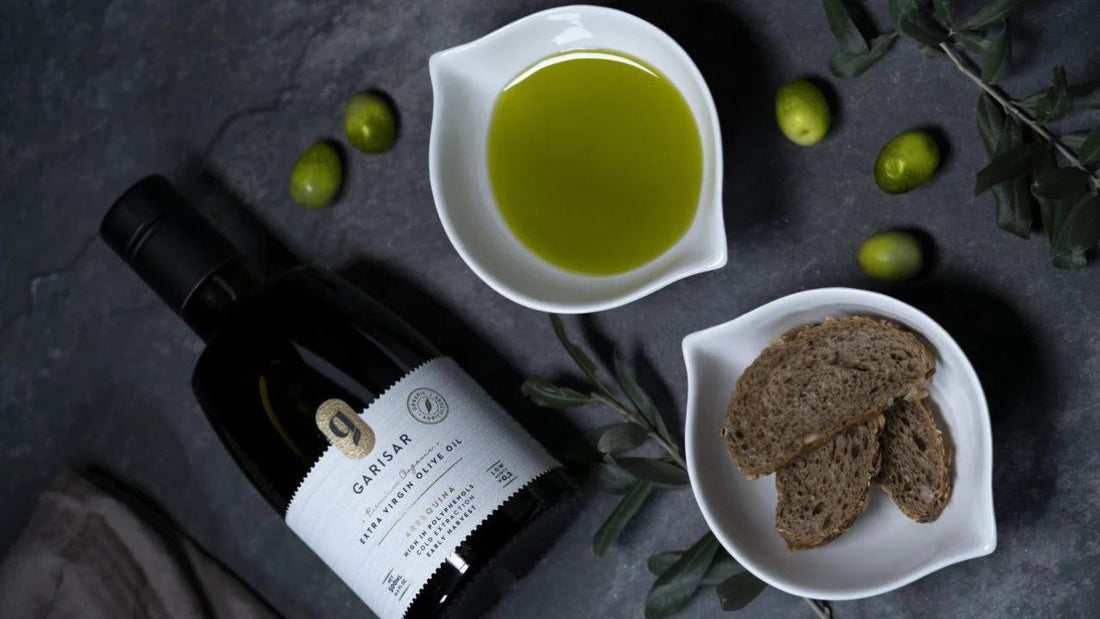
What is Cold Pressed Olive Oil? How It Elevates Your Dishes
Cold pressed olive oil has gained popularity in recent years as a healthier alternative to regular olive oil. The process of cold pressing involves extracting the oil from olives without the use of excessive heat or chemical solvents, preserving the oil's natural flavors, nutrients, and antioxidants. In this article, we will explore the cold pressing method, its benefits, nutritional value, cooking uses, storage tips, differences from regular olive oil, and address common myths surrounding it.
The Process of Cold Pressing Olive Oil
Cold pressing olive oil involves mechanical extraction without heating the olives. The process begins by crushing the olives into a paste using stone or metal grinders. The paste is then spread over mats and pressed to extract the oil. This traditional method ensures the oil retains its natural goodness and distinct flavor profile.
Benefits of Cold Pressed Olive Oil
-
Rich in Antioxidants: Cold pressed olive oil contains high levels of antioxidants, such as vitamin E and phenolic compounds, which can help combat oxidative stress and inflammation in the body.
-
Heart Health: The monounsaturated fats in cold pressed olive oil, such as oleic acid, have been linked to improved heart health by reducing LDL cholesterol levels and supporting healthy blood pressure.
-
Cancer Prevention: Some studies suggest that the antioxidants in cold pressed olive oil may play a role in reducing the risk of certain types of cancer.
-
Digestive Health: Cold pressed olive oil can promote better digestion and gut health due to its anti-inflammatory properties.
Nutritional Value of Cold Pressed Olive Oil
Cold pressed olive oil is not only rich in healthy fats but also contains essential vitamins and nutrients. Here is a breakdown of its nutritional value per tablespoon:
- Calories: 120
- Total Fat: 14g
- Saturated Fat: 2g
- Monounsaturated Fat: 10g
- Polyunsaturated Fat: 1.5g
- Vitamin E: 8% of the Daily Value (DV)
How to Use Cold Pressed Olive Oil in Cooking
Cold pressed olive oil is versatile and can enhance the flavor of various dishes. Here are some ways to use it in your cooking:
-
Salad Dressings: Drizzle cold pressed olive oil over salads for a refreshing and healthy dressing.
-
Marinades: Use it as a base for marinades to tenderize and add flavor to meats and vegetables.
-
Sauteing: Cold pressed olive oil can be used for light sautéing and stir-frying.
-
Dips and Spreads: Create delicious dips and spreads by blending cold pressed olive oil with herbs and spices.
Storing Cold Pressed Olive Oil
To preserve the freshness and quality of cold pressed olive oil:
- Store it in a dark, cool place away from heat and light.
- Keep it tightly sealed to prevent exposure to air.
- Use it within six months to a year for the best flavor.
Read Also: Best Oil to Fry Chicken
Differences Between Cold Pressed and Regular Olive Oil
The key differences between cold pressed and regular olive oil are the extraction methods and the quality of the final product. Cold pressed olive oil undergoes minimal processing, ensuring the highest nutritional value and distinct flavor. On the other hand, regular olive oil is often produced using high-heat methods and chemical solvents, which may strip away some of its beneficial properties.
Health and Environmental Considerations
The production of cold pressed olive oil is more sustainable and environmentally friendly compared to conventional methods. It requires less energy and reduces waste, making it a greener choice for conscious consumers.
Cold Pressed Olive Oil Myths Debunked
-
Myth: Cold Pressed Oil is Less Tasty: Cold pressed olive oil retains its natural flavors and can have a more distinct taste compared to regular olive oil.
-
Myth: It's Less Versatile for Cooking: Cold pressed olive oil can be used in various cooking methods without losing its nutritional benefits.
-
Myth: All Cold Pressed Oils are the Same: The quality and flavor of cold pressed olive oil can vary based on the olive varieties used and the production process.
FAQs
Is cold pressed olive oil suitable for high-heat cooking?
Cold pressed olive oil has a lower smoke point compared to other oils like canola or grapeseed oil, so it is best used for light cooking or as a finishing oil for dishes.
Does cold pressed olive oil have a different color than regular olive oil?
Yes, cold pressed olive oil often has a deeper green color due to the presence of more natural pigments and antioxidants.
Can cold pressed olive oil help with weight loss?
While cold pressed olive oil is a healthy fat, it is calorie-dense, so it should be consumed in moderation as part of a balanced diet.
Is it normal for cold pressed olive oil to solidify in the refrigerator?
Yes, cold pressed olive oil may solidify when exposed to cold temperatures, but this does not affect its quality. Allow it to return to room temperature before use.
Can I use cold pressed olive oil for skincare?
Cold pressed olive oil is often used in natural skincare products for its moisturizing and antioxidant properties.
Cold pressed olive oil is a nutritious and flavorful option for those seeking a healthier alternative to regular olive oil. With its abundance of antioxidants and heart-healthy monounsaturated fats, incorporating cold pressed olive oil into your diet can have numerous health benefits. Whether you use it in cooking or as a finishing touch to your dishes, cold pressed olive oil is a versatile and delicious addition to any kitchen.
